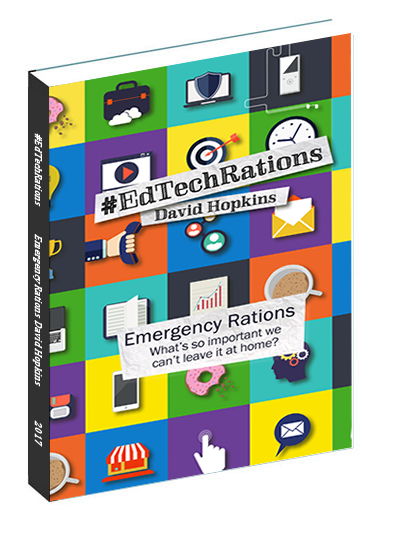Using video: from passive viewing to active learning
 Emily Moore has written this great introduction in the Faculty Focus: online magazine: “From Passive Viewing to Active Learning: Simple Techniques for Applying Active Learning Strategies to Online Course Videos”. Please read the original as it covers more in depth use of video, but my highlights of the piece are below.
Emily Moore has written this great introduction in the Faculty Focus: online magazine: “From Passive Viewing to Active Learning: Simple Techniques for Applying Active Learning Strategies to Online Course Videos”. Please read the original as it covers more in depth use of video, but my highlights of the piece are below.
Video as a guided lesson (flipping the classroom?): “The goal here is to help ensure that students watch videos actively—in other words, giving it their full attention. You also want to help draw students’ attention to (and reinforce) the most important concepts being presented.”
- Pose a question at the beginning of each video to give students an idea before they watch of what to expect, what to look for, and what might be worth thinking about.
- Present videos in an outline-like structure using concise, descriptively labeled links that include running times as shown below.
- Embed short graded or self-assessments either in the video itself, or at the end of each video.
Video as springboard for in-depth discussion: “This strategy encourages students to make a personal connection between video content and their own existing knowledge. It also encourages student-student collaboration, which is a critical component of any successful online course.”
- Assign a video. After viewing the video, have each student post to a discussion board based on a specific task, concept, or reflection and encourage students to interact and engage with each other.
Video as springboard for critical thinking: “Ideally, students come away from a class not just having memorized material, but also having understood it well enough to discuss and apply it to novel scenarios.”
- Get students to identify, compare, and contrast the concepts presented in a video (or series of videos). How are the concepts similar? How are they different? Which are substantiated or refuted by the course text (or other course materials)?
Video as a way to strengthen online research skills while driving conceptual understanding:
- Have students locate online and present to the class a second video that (supports, defends, opposes, elaborates…) the original video.
- Use students’ “found” videos as the basis for class discussion. Ask students to comment, via discussion board, on how well the clips shared by their classmates met the selected criterion.
You decide what kind of video material you want to use, and in what way and for what learning outcome, but you must also look at the copyright and legality of the material – are you using a video from (e.g.) the official BBC channel or a clip that somebody decided to upload?
Are you using video for any of the above activities or techniques? Do you use video to flip the classroom? Please leave a comment and tell us about what you’ve done, how you’ve done it, and what experiences you and your students had.
Image source: Stormtroopers by Stefan (CC BY-NC-SA 2.0)


















Perhaps added to the list can be “have students create a video”. Creating content requires multiple skills and reinforces knowledge. Machinima is one way to do this – Video games and Immersive 3D environments offer a variety of backgrounds and actors.
An interesting article on video in the classroom. How do you see this translating to the corporate training world?
Hi Jeff – I have plenty of ideas but this is not my areas of expertise (corporate training) – I’ll ask a few Twitter chums to join in and help you out if that’s OK? @CraigTaylor74, you there?
I am a trainer who uses Video s in Instructor Led Training as well as in E Learning initiatives taken by my company. This has been extremely useful to me. Where and how to use Video and how to build interactivity.
I have used both QR codes in my training as a means of enhancing both workbooks and course invites. It has a positive interest with Gen Y individuals in the classroom and can excite them before the course starts.
Hi David,
This is a really interesting article (I also read Emily’s original). Although I’m not a teacher I’ve been involved in education and online video for sometime. It occurred to me that it would have been great for Emily’s article to be accompanied by some articles about how to create videos for education.
Lots of lecturers and teachers can feel really overwhelmed with where to start with video. I’m currently working on a blog post for http://www.mediacore.com/blog so would be interested to talk to you about your ideas on this.
Anna
Another form is having students search on the web for a video about a certain topic and post it back in the online course space
I used video in my classroom and found that students were more engaged in some complicated topics. Having students create a video from the comment is also a good idea. I’m thinking to ask my master students to create a video regarding the GAP model in the topic of quality management.